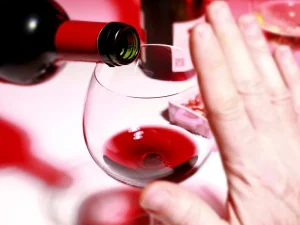
For most people, alcohol withdrawal symptoms will begin to subside after 72 hours. If you are still experiencing withdrawal symptoms after three days, talk to withdrawal seizures symptoms your healthcare provider. This is a serious complication of the alcohol withdrawal syndrome and needs to be treated in a hospital emergency room. Binge drinking can cause alcohol withdrawal seizures in people, even for individuals who do not have epilepsy.
- Neurobiologically, topiramate acts by facilitation of GABAergic neurotransmission and/or inhibition of glutamatergic signaling in corticomesolimbic pathways.
- The current evidence favors symptom-triggered treatment, as it reduces the average length of stay, the total dosage of administered benzodiazepines, and the level of patient sedation.
- If you consistently consume significant amounts of alcohol, your CNS gets used to this effect.
- The long-term administration of anticonvulsants for uncomplicated ethanol withdrawal seizures is unnecessary and possibly dangerous.
- In an initial open-label 16-week trial of pregabalin (150–450 mg/day), ten of 20 patients receiving pregabalin remained alcohol-free at the end of the study—five relapsed, four dropped out, and one discontinued due to adverse effects.
- Stock and colleagues completed a randomized, double-blind controlled study in an outpatient setting where gabapentin was compared with chlordiazepoxide in 26 veterans (25 males and one female) with mild-to-moderate AWS 42.
3 Gabapentin and Pregabalin
- The timeframe will be different for everyone, but seizures will normally start within the first 72 hours.
- Alcohol dependence occurs after a period of consistent drinking or frequent binge drinking.
- The tonic phase is followed by the clonic phase in which the arms and legs jerk rhythmically and rapidly.
- For this reason, there have been many attempts to classify symptoms of AWS either by severity or time of onset to facilitate prediction and outcome.
Many dependent drinkers can stop drinking without experiencing severe withdrawal. However, intercurrent illness (trauma, fever, hypoxia) can contribute to severe withdrawal. Alcohol withdrawal begins within approximately 8 hours of abstinence and peaks in intensity on the second or third day; symptoms usually diminish by the fourth or fifth day. All heavy drinkers admitted to hospital should be monitored for the emergence of symptoms and signs indicating withdrawal, many hospitals using a structured withdrawal scale to monitor newly admitted patients. Symptoms outside of the anticipated withdrawal period or resumption of alcohol use also warrants referral to an addiction specialist or inpatient treatment program. Over 50% of alcohol withdrawal seizures may relate to additional risk factors, such as preexisting epilepsy, structural brain lesions, or drug use.
Prevention of further drinking

In this study, high-dose oxcarbazepine delayed time to relapse (58.6 % at the end of trial) to a greater degree than both low-dose oxcarbazepine (42.8 %) and naltrexone (40.7 %). High-dose oxcarbazepine also decreased the hostility–aggression subscore on the revised version of the 90-item Symptom Checklist relative to the two other groups. Although these open-label results are promising, as of March 2015, there are no active trials of oxcarbazepine in the treatment of alcohol dependence with or without other common psychiatric co-morbidity listed on ClinicalTrials.gov. Repeated detox attempts can increase the risk of a severe withdrawal syndrome, including alcohol withdrawal seizures, due to the kindling effect, and a severe withdrawal syndrome called delirium tremens (DTs).
Delirium Tremens (DTs)

Diagnosing alcohol-related seizures (ARS) is a complex process that involves distinguishing these seizures from other types and identifying their link with alcohol use or withdrawal. Medications such as clonazepam and lorazepam are benzodiazepines that can cause a life threatening interaction when mixed with alcohol. This article explores how alcohol affects people with epilepsy and provides recommendations for how much alcohol is best to consume.
- For people with epilepsy, alcohol may interfere with anti-seizure medications and increase the risk of seizures.
- The only way to lower the risk of severe alcohol withdrawal seizures is to seek addiction treatment as soon as possible.
- It’s difficult to predict who will and who won’t experience alcohol withdrawal — and how severe it will be.
- Additionally, if a seizure cannot be stopped or multiple seizures occur in rapid succession, it could result in permanent injury or prove fatal.
- About 90% of the patients had 1 to 6 generalized tonic-clonic seizures, which occurred without warning, whereas 60% experienced multiple seizures, usually 2 to 4 within a 6-hour period.
- Additionally, positive findings from studies with medications such as topiramate and zonisamide showing substantially reduced drinking even in actively heavy drinking subjects that don’t want to be totally abstinent, is also promising.
Can you prevent alcohol withdrawal seizures?
- The three-question Alcohol Use Disorders Identification Test–Consumption and the Single Alcohol Screening Question instrument have the best accuracy for assessing unhealthy alcohol use in adults 18 years and older.
- The main ways to prevent alcohol withdrawal are to avoid alcohol altogether or to get professional help as soon as possible if you think you’re developing alcohol use disorder.
- For most people, alcohol withdrawal symptoms will begin to subside after 72 hours.
Thus, alcohol withdrawal seizures are unlikely to be triggered in the neocortex. Indeed, electrophysiological studies have demonstrated a critical role for the inferior colliculus (IC) in the initiation of audiogenic seizures in rodents. Acute alcohol intoxication suppresses spontaneously and acoustically evoked neuronal firing in the IC central nucleus (14), whereas at the transition to seizure, sustained increases in firing persist during wild running, the initial phase of the seizure (15). The IC external cortex is believed to amplify and propagate neuronal activity originating in the IC central nucleus. Neurons within the deep layers of the superior colliculus (16) and the periaqueductal gray https://ecosoberhouse.com/ (17) also may play a role in the initiation of audiogenic seizures. It is hypothesized that seizure activity propagates from the IC to deep layers of the superior colliculus (a major output of the IC) to trigger the wild running phase of the audiogenic seizure.

